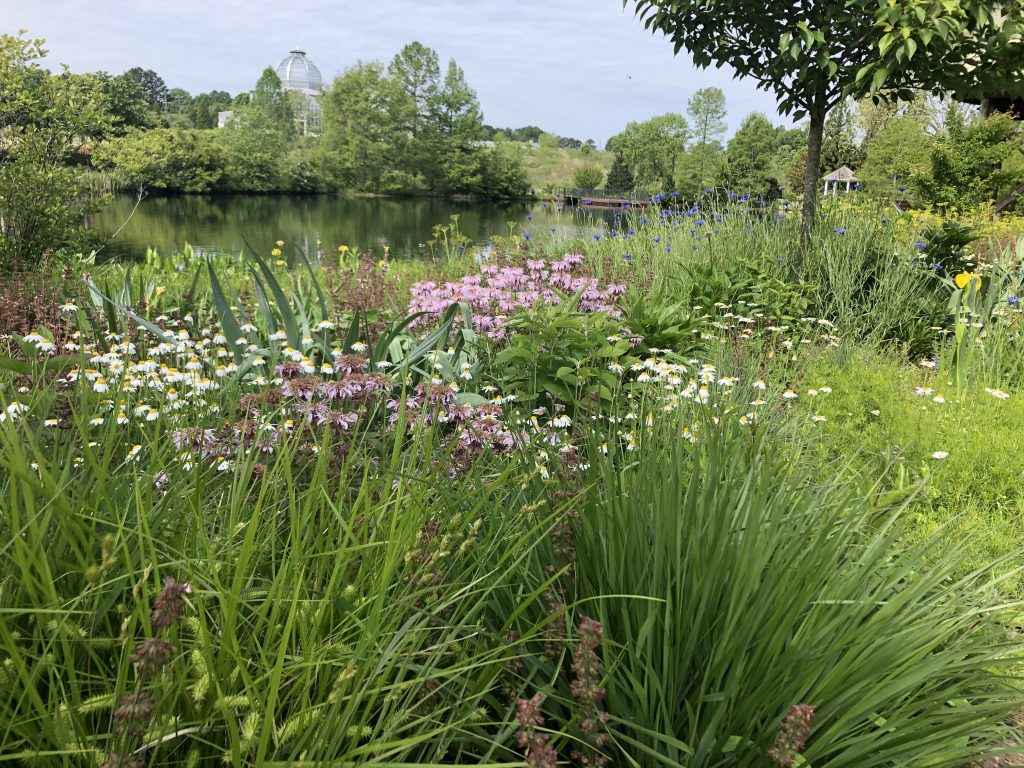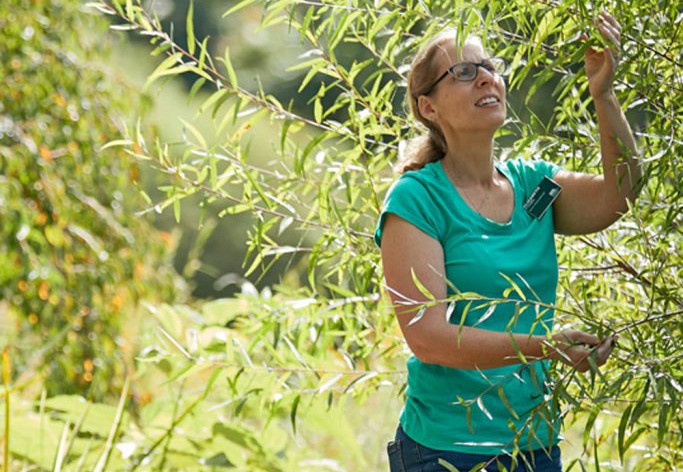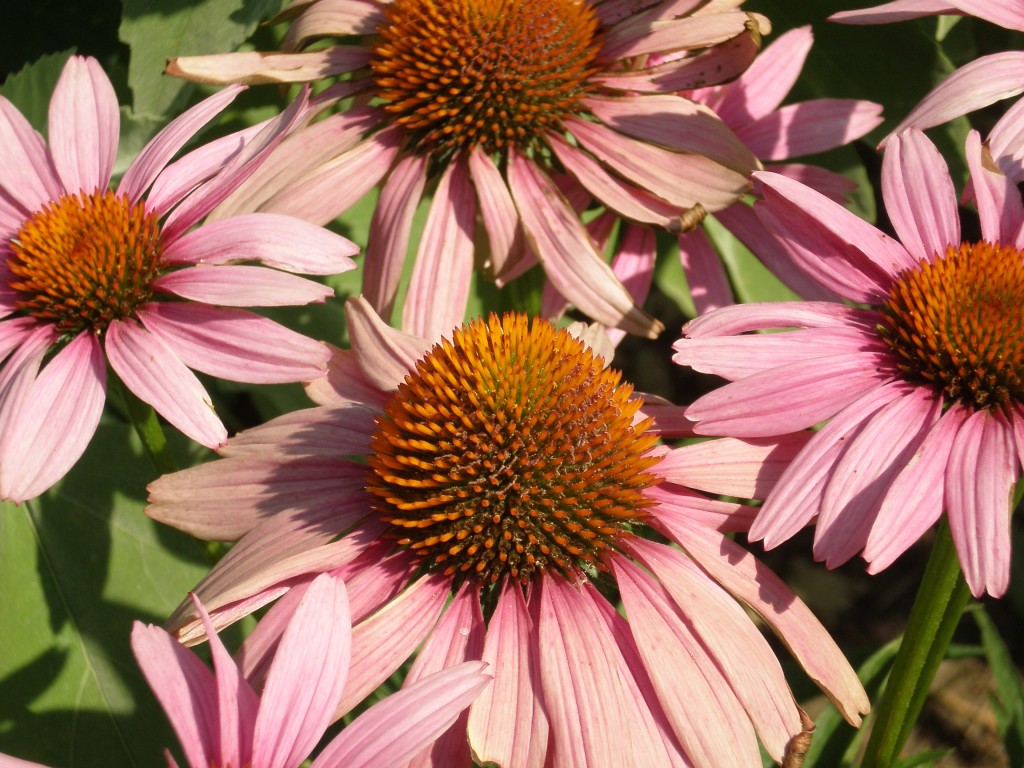Elizabeth Fogel: Designing for Tomorrow
Senior Horticulturist Elizabeth Fogel studied the latest theories for sustainable and regenerative landscapes by visiting 10 eco-focused botanical gardens over the past two years. Her cross-country travel and hands-on research were made possible by the Frank L. Robinson Endowed Chair in Horticulture.
In downtown Chicago, Fogel was awed by the Lurie Garden, 2.5 acres of meadow-style plantings alive with pollinators and wildlife, though juxtaposed with towering steel skyscrapers. Mt. Cuba Center in Delaware had transformed several formal gardens using native plants, nurtured with custom-blended compost teas and integrated pest management. Lady Bird Johnson Wildflower Center in Texas flaunted breathtaking flora, supported by a highly effective eco-management system.
Practices such as these are being selectively incorporated by Lewis Ginter and can be used in home landscapes, too. If you’ve enjoyed the new garden along the edge of Sydnor Lake between the Lotus Bridge and Klaus Family Tree House, you’ve seen a direct result of Fogel’s research. A team of horticulture staff and volunteers helped implement her vision for this landscape created with 1,800 plugs of natives representing 36 different types of plants.

Native plantings like this wildflower meadow along Lake Sydnor help improve water quality, locally and in the Chesapeake Bay.
As the natural world yearns for remediation, Lewis Ginter Botanical Garden demonstrates solutions—for the health of our community and biosphere. Ask Fogel why regenerative landscapes are important to her and she gives professional and personal reasons. “Not only is it the right thing to do,” she shares, “it’s insuring the future for our children.”
Restoring Relationships
Specialized relationships between animals and plants are the rule in nature, not the exception. Native plants and native animals (including insects and all-important pollinators) have a history of thousands of years together. This means native plants provide for wildlife’s needs better than plants that have evolved elsewhere.
In her research of regenerative landscapes, Senior Horticulturist Elizabeth Fogel studied the work of Doug Tallamy, University of Delaware professor and noted author. His books include Bringing Nature Home and The Living Landscape, which he co-authored with Rick Darke. Tallamy asserts destruction of natural habitat results in a loss of biodiversity and, ultimately, species extinction. This affects everyone because we all depend on the life support plants and animals provide.
The future challenges us to design landscapes to enhance rather than degrade ecosystems. The good news is we can make a difference. Tallamy states since nearly 85% of the U.S. is privately owned, our private properties are an opportunity for long-term conservation if we design them to meet the needs of the life around us.
What Can You Do?
- Plant natives. Not only do they support wildlife; they are perennials adapted to our environment, often requiring less water than non-natives. Tallamy suggests limiting the use of non-native plants to no more than 30% of the landscape. He explains: “Our concern is not the presence of non-native plants, it’s the absence of native plants.”
- Leave cover for wildlife. Fogel says to consider allowing leaf litter to collect and waiting until late winter/early spring to cut back perennials and ornamental grasses. Many insects and some small animals need this protection for overwintering.
- Limit the lawn. According to Tallamy, 92% of the American landscape is lawn. Recognizing there’s sometimes a need for lawn, he suggests putting turf only where you want to walk.
- Use “green” mulch. Explore using layers of living plants placed closely together to naturally suppress weeds and eliminate the need for bark mulch.
- Avoid insecticides. While it can be frustrating to see the consequences of insects in your landscape, Tallamy suggests we modify our view to allow for some imperfection.

